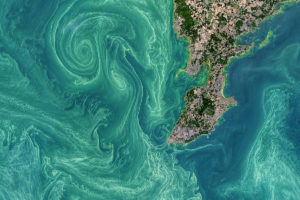
Pure Ocean’s mission is to support scientific research for ocean protection. Our scientific committee, chaired by Françoise Gaill, has studied hundreds of applications from all over the world and selected innovative ocean research programs, responding to major current and future environmental challenges.
Below is a summary of the 4 projects that have been selected for funding in 2021:
1. Protection of the Hidden Secret of the Aegean Sea: Coralligenous Habitats
The Mediterranean hosts a hidden secret: coralligenous reefs, which thrive in dim light areas up to 250 metres deep. They are one of the most complex and rich habitats within the Mediterranean and yet one of the least studied and protected. The project aims to develop a methodology for small research vessels to better understand and preserve this fragile habitat in the Aegean Sea, especially by enforcing the trawling ban over these sites.
2. Dinitrogen fixation in the Indian Ocean according to monsoon seasons
Nitrogen is a vital element for all living organisms. In the ocean, micro-organisms called diazotrophs transform the atmospheric nitrogen dissolved in the water (dinitrogen, N2) in a digestible form for marine animals and plants: this is nitrogen “fixation”, a key process which fuels all marine food chains and allows the ocean to capture CO2. The project aims to do a comparative study of this process between monsoon and intermonsoon seasons in the Indian Ocean, which is warming faster than any other basin in the world’s oceans. Researchers also hope to discover new diazotroph species unique to this region.
3. Building a complete understanding of how microplastics affect the physiology of wildlife
Microplastics (< 5 mm) are a real scourge for both terrestrial and marine wildlife. These tiny fragments penetrate organs, accumulate in tissues and can even enter cells. By adopting a unique transdisciplinary approach, the MicroPOW project studies the biological consequences of microplastic exposure, from the cellular level to the whole organism. Shearwaters of Lord Howe Island (Australia) will be examined as model-species and compared according to their level of microplastic ingestion, with results applicable to humans.
4. Biomimetic mooring buoy to keep marine biodiversity afloat
Classic mooring buoys negatively impact the seabed. In the Mediterranean, they contribute to damage the valuable Posidonia seagrass. The #FRF project aims to develop a biomimetic, eco-designed and sustainable subsurface buoy. Inspired by sea sponges, the buoy provides many surfaces for local species to attach and find refuge. Using a 3D printed biogenic material and with a low carbon impact, this concept could be easily replicated all around the world.


